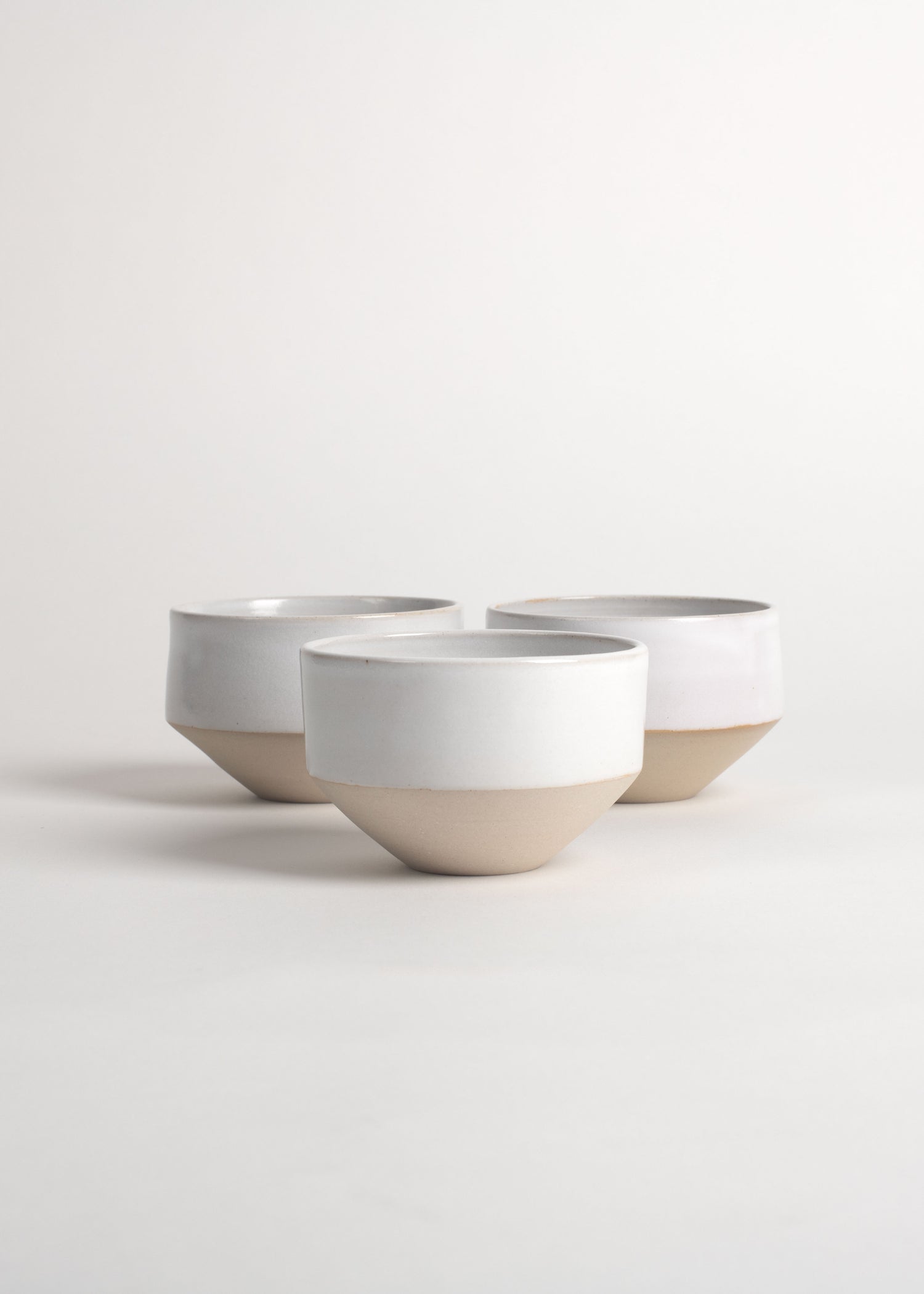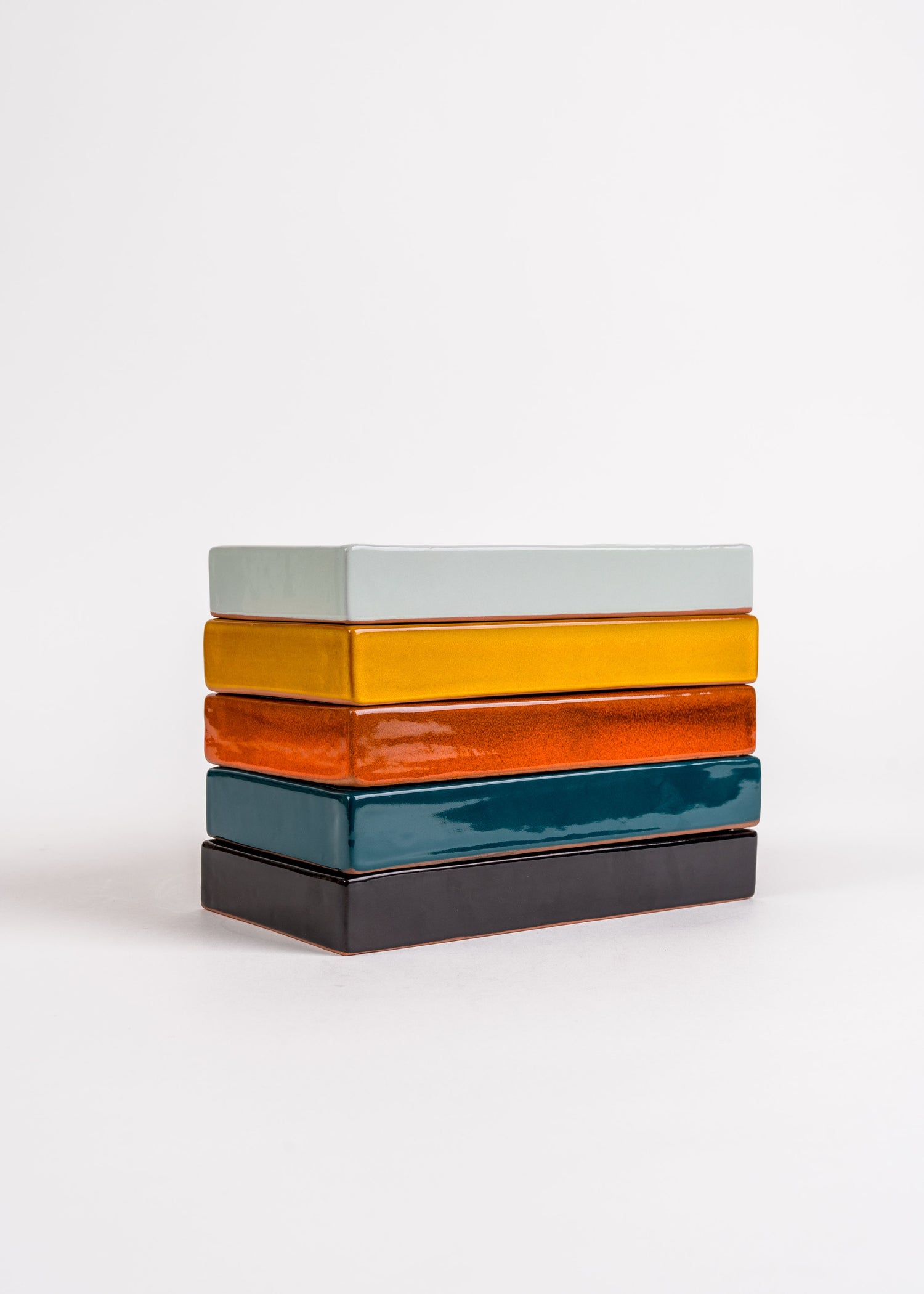
How to Clean and Care for Handmade Ceramics
To preserve the longevity of your ceramic tableware, proper care and maintenance are essential.
IS HANDMADE CERAMIC TABLEWARE MORE FRAGILE?
All our ceramics are entirely handmade. But does that make them more fragile than mass-produced pieces? That’s a common belief—but not entirely accurate.
Whether handmade or industrial, any ceramic is subject to the same law of gravity! First piece of advice: keep your ceramics away from the edge of tables and counters.
In reality, it’s not the production method that determines a piece’s sturdiness, but rather the type of clay, the shape, and the thickness of its walls.
For instance, hard porcelain and stoneware are more robust because they are less porous than red clay. A ceramic with very thin walls or protruding parts like a spout or a handle will be more prone to chipping or breaking than one with thick edges—regardless of whether it’s handmade or industrial.
That said, mass production usually favors dense clays like hard porcelain and designs with thick, sturdy forms. In contrast, handmade ceramics often feature thinner or more irregular walls and use a wider variety of clay bodies. That’s why we tend to think of handmade ceramics as more fragile. But the truth is, a well-made stoneware piece can be much more resilient than a thin-edged industrial porcelain plate.
When we work with hospitality professionals—hotels, cafés, restaurants—we pay close attention to the shapes we offer, and we adjust them when necessary to suit heavy use and repeated dishwashing.

HOW TO WASH CERAMIC TABLEWARE ?
All our ceramics are dishwasher safe. When placing them in the dishwasher, make sure the pieces don’t knock against each other—this is especially important for terracotta pieces, which are more prone to chipping.
We recommend the same level of care when washing by hand. Avoid stacking ceramics in the sink under other dishes, and don’t let water sit inside them—particularly terracotta, which is more porous than stoneware.
ARE CERAMICS OVEN-SAFE? WHAT ABOUT THE MICROWAVE?
Our ceramics are not oven-safe. As for the microwave, we advise against using it, even though our stoneware pieces are technically compatible.
Ceramics—regardless of the type of clay—do not tolerate sudden changes in temperature or humidity. For example, placing a plate or bowl straight from the fridge into a high-powered microwave will likely cause it to crack. Pouring a boiling liquid into a cold ceramic piece is also not recommended. Similarly, never microwave an empty ceramic container—this could damage both your tableware and your appliance.
Finally, if you have an outdoor space such as a garden or balcony, avoid leaving your ceramics outside—especially in cold weather.
The ideal environment for ceramics is dry and at room temperature.
MOVING OR TRAVELING? HOW TO PACK CERAMICS PROPERLY?
To prevent breakage, ceramics must be protected from two main risks: impact and compression.
Protecting ceramics from impact
The first goal is to wrap your ceramic piece in a way that no sharp edges can be felt through the packaging. The wrapping should form a thick, cushioned layer all around the piece.
Handles, spouts, knobs, or any protruding elements should be wrapped first—individually—before wrapping the entire piece.
We use a layer of tissue paper, followed by corrugated cardboard, and finally a protective layer of fluted cardboard.
The second step is to make sure the ceramic piece stays firmly in place once packed. The goal is to avoid any movement within the box.
If the ceramic is packed in a box with other items, fill the space between the objects and the walls of the box with packing peanuts or crumpled paper to prevent any impact from reaching the contents. Then, place each item so that they are snugly held in place, but not under pressure.
If your box contains only one piece, make sure it is protected on all sides with sufficient padding so that it cannot shift or touch the sides of the box.
Avoiding compression
Breakage can also result from compression, caused by too many objects packed too tightly or by heavy weight placed on top. We recommend marking boxes that contain ceramics with “Fragile” tape, so they are kept at the top during stacking.
ESSENTIAL CERAMIC CARE TIPS
- Always handle your ceramics with care when loading or unloading the dishwasher to avoid clinking. Use gentle programs and avoid overly harsh detergents.
- If washing by hand, clean your ceramics right after use to prevent them from sitting in the sink, which can lead to water stagnation or accidental breakage.
- Do not use your ceramics in the oven or expose them to direct flame.
- If using a microwave, do so with care and avoid sudden temperature changes.
- When transporting ceramics, ensure that spouts and handles are securely wrapped first. The entire piece should be well-padded to ensure no edges are exposed or felt through the packaging.
- Avoid compression by not placing heavy items on top of your ceramics. Always mark the box as "Fragile" for added caution.
